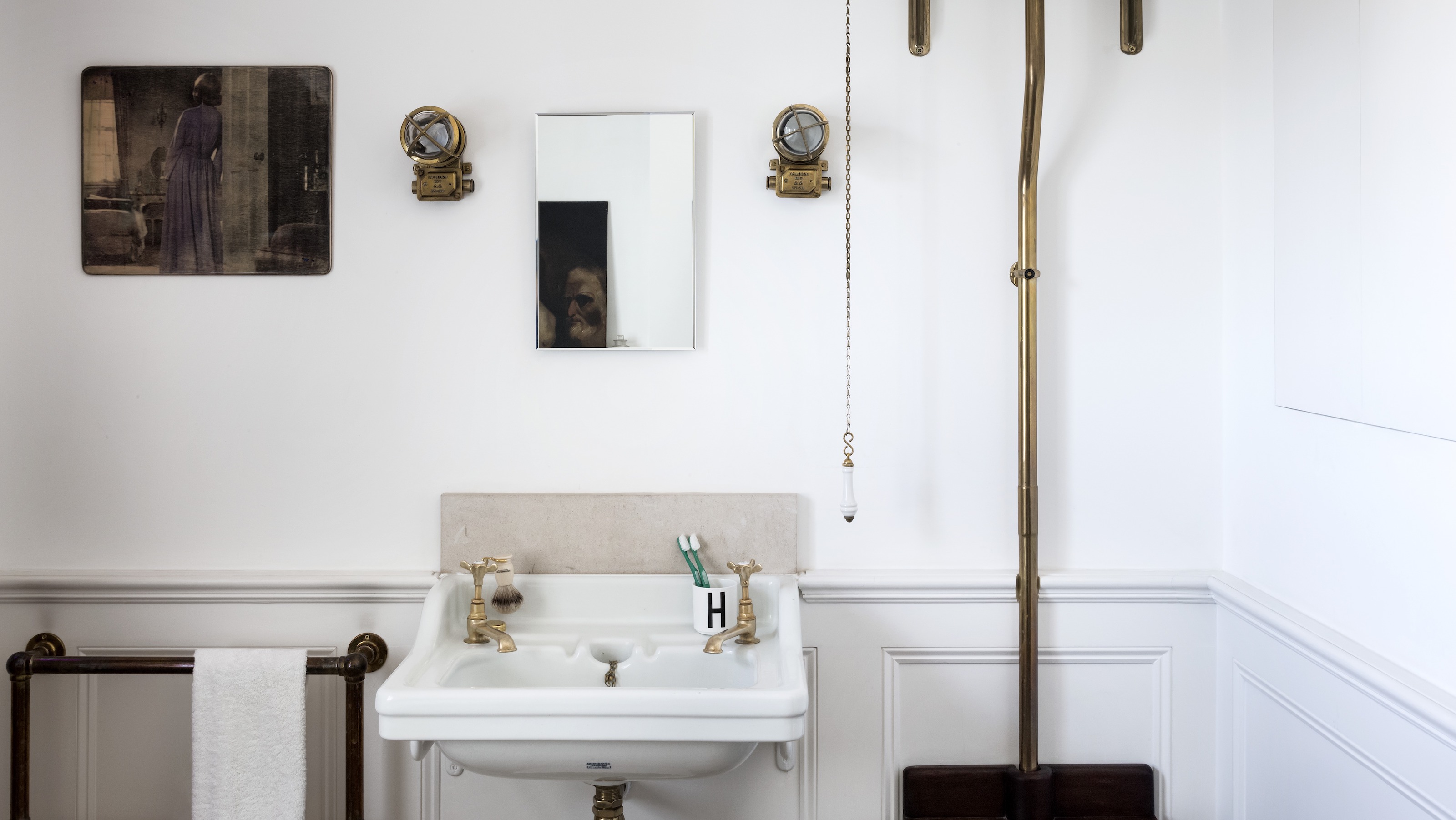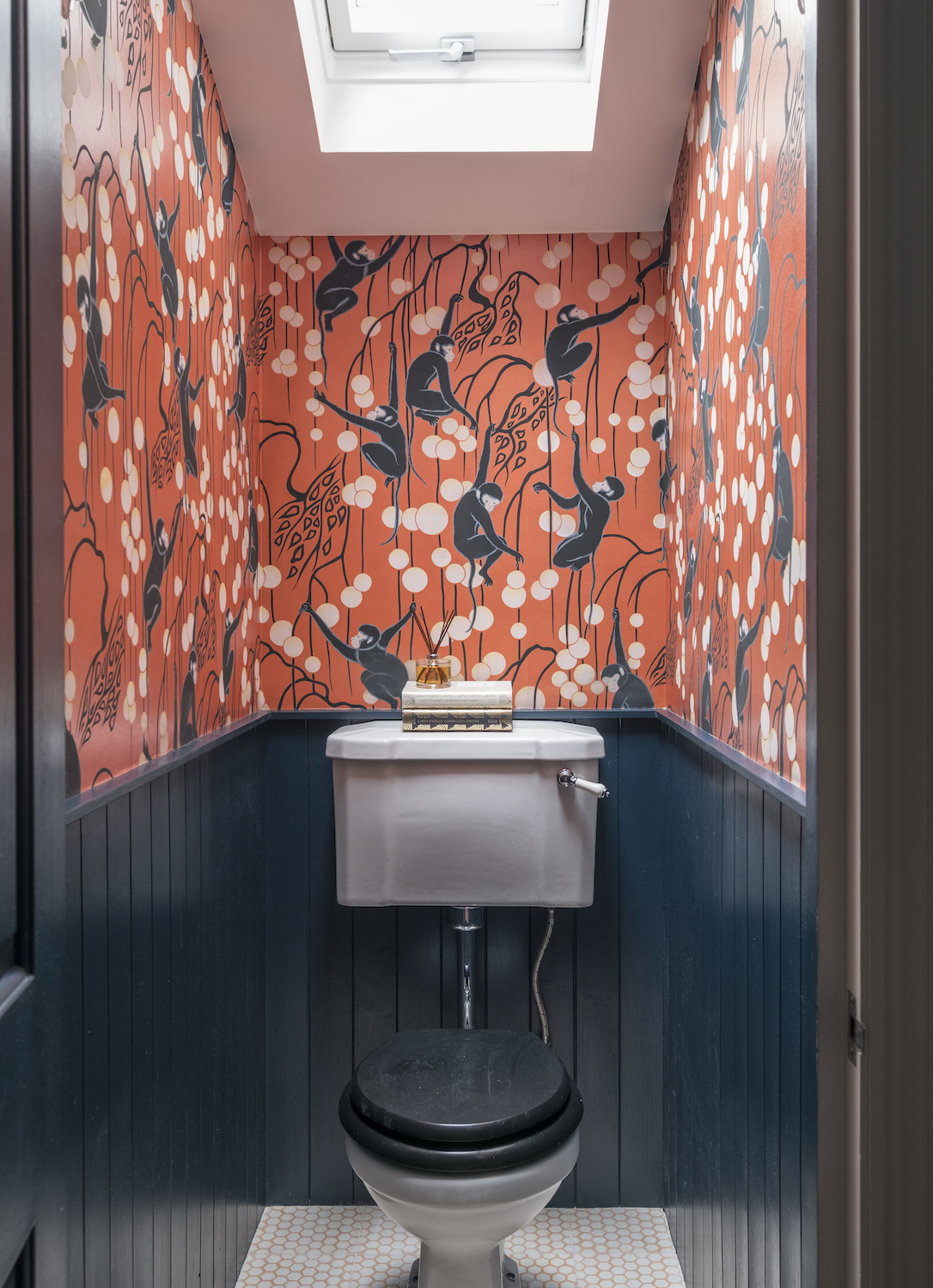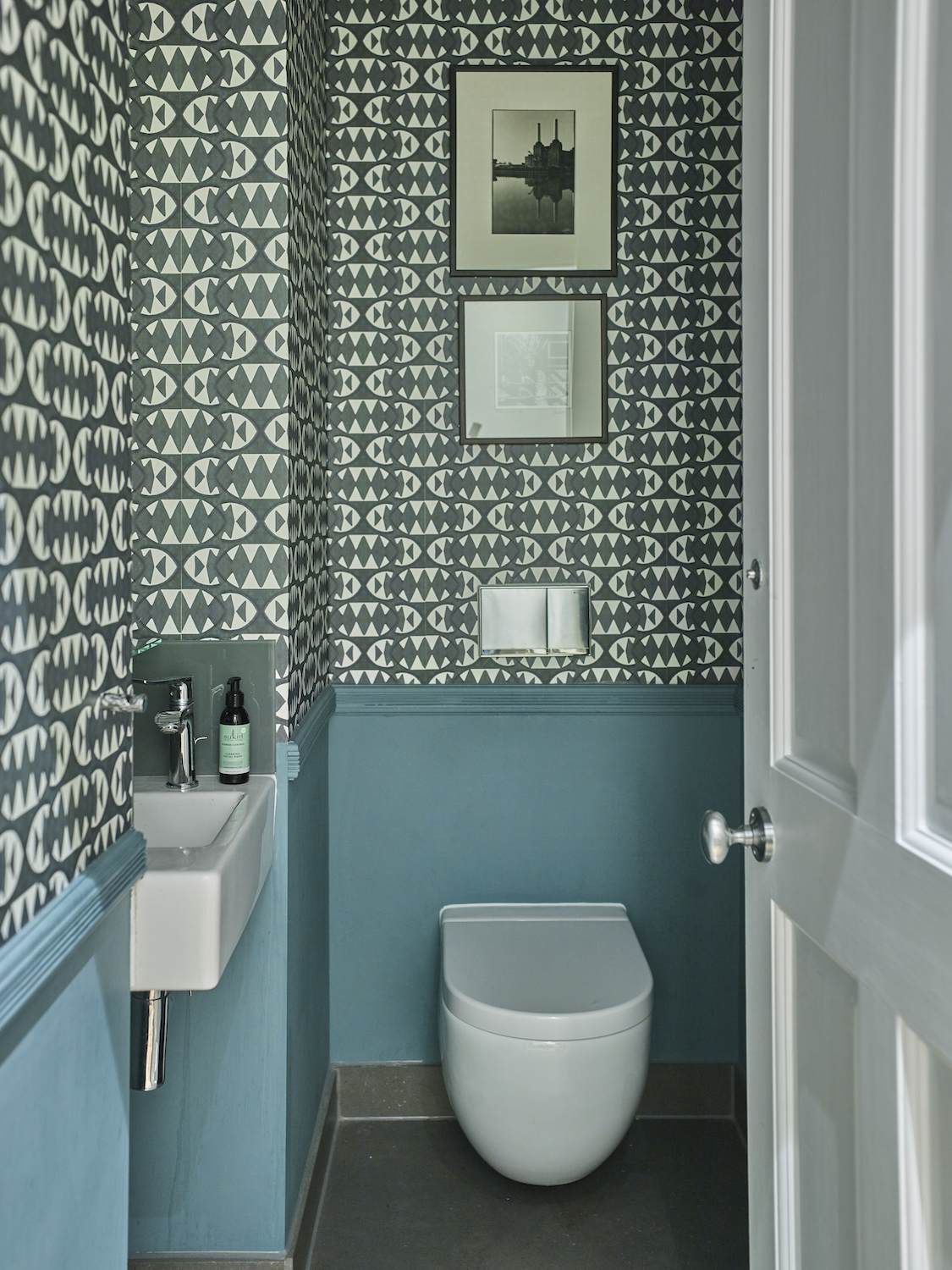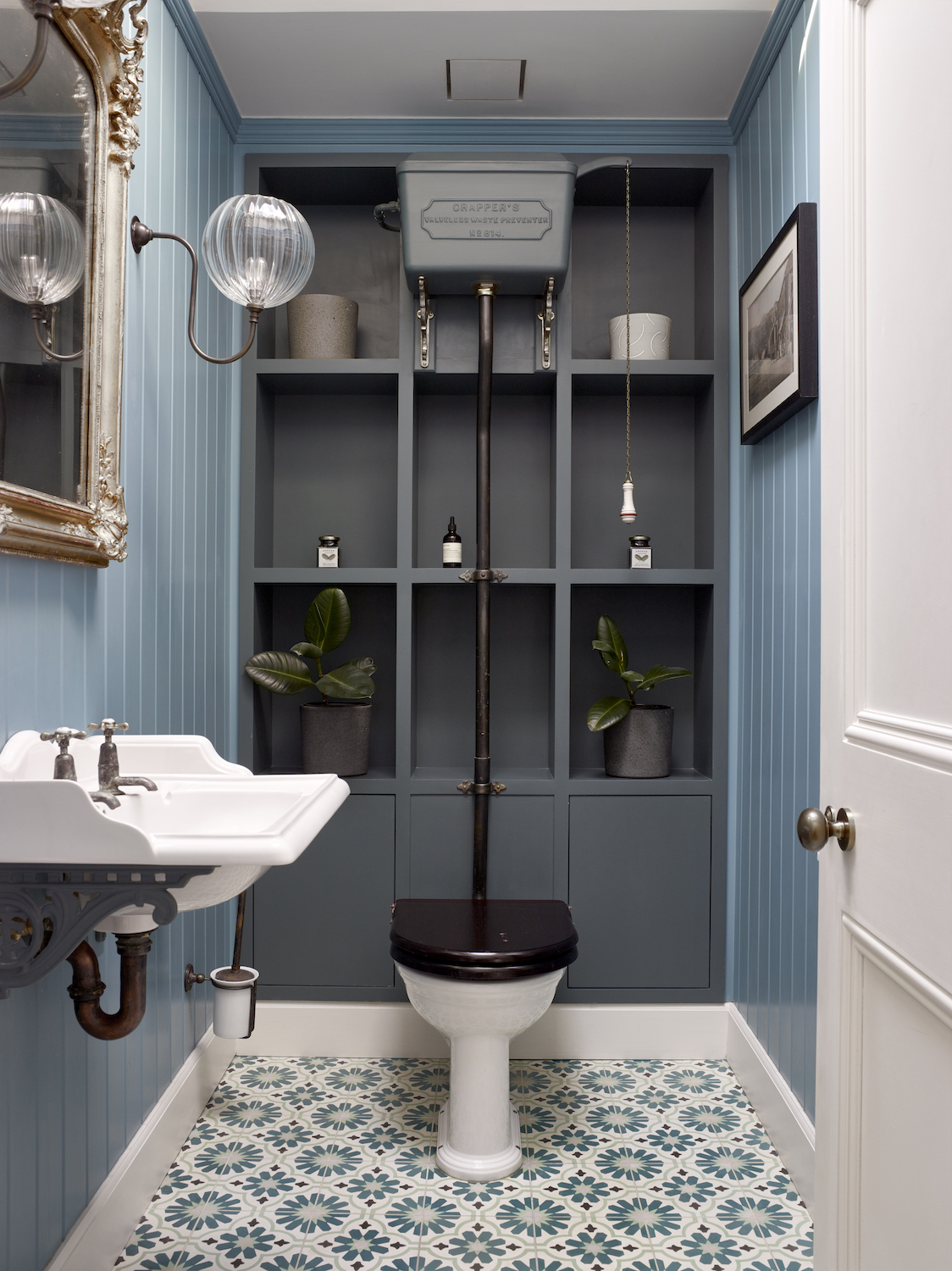How to paint behind a toilet - 3 expert secrets to make those awkward angles easy
The expert secrets for how to paint behind a toilet mean you can give the smallest room a spruce in 3 simple stages

Once you know how to paint behind a toilet, it's easy to give the smallest room a spruce. Call in a professional by all means, but decorating a cloakroom is a simple DIY job that could be done in a weekend.
Arm yourself with this expert advice and you can let loose to update your powder room or give the space a seasonal refresh, without the long wait for quotes or tradespeople.
In fact, once you realise how easy it is, you may wonder why you've not done it sooner.
How to paint behind a toilet - step by step

What you will need:
Small roller and paint brush
Paint tray
Garbage bags
Masking tape - our editor swears by this particular masking tape from Amazon.
Paint of your choice
Damp cloth
1. Clear the space
As with any form of decorating and how to paint a room big or small, preparation is key. So remove as many objects or fixtures that will get in the way as possible. It's important to give yourself room to manoeuvre as well as access to the wall. This includes removing the water tank lid if it's a wall-hung cistern.
'Tank lids often hang over the tank by about an inch and don’t usually have enough clearance between the lid and the wall,' says Ryan Godden, paint expert at Wood Finishes Direct. 'The lids easily lift off, which gives the tank itself plenty of clearance, for you to paint behind.'
2. Make sure the walls are clean and surfaces protected

Wash the walls with a cloth and sugar soap and make sure the area you want to paint is clean and dry. Stick masking tape along the skirting boards, floor or any edges that you don't want to mark with paint. If you're going for a colorful bathroom, it's also worth covering the vanity unit or whatever else is in the vicinity, too.
'Take a garbage bag and place it over the tank from the top down,' says Ryan at Wood Finishes Direct. 'Wrap a couple of strips of tape around the entire tank. This will protect your water tank. Repeat this step with any pipes.
'If painting the wall above the toilet, I would recommend taping a small dust sheet over the entire toilet too, to protect it from any paint splashes.'
3. Use a small roller and a brush

As long as you have the right equipment, this is a simple task. 'A small roller makes painting behind a toilet easy and doable for everyone,' says Ryan at Wood Finishes Direct. 'You will need a small brush when painting around the pipes however, as rollers cannot get close enough.'
The trick is to dab only a tiny amount of paint onto one side of the brush, and use that to get behind the cistern. Wipe any splatters off immediately with a damp cloth.
And of course, remember to keep the room as airy as possible. 'Ventilation will help the paint dry so open any windows or doors first, to make sure you have good airflow,' Ryan says.
Be The First To Know
The Livingetc newsletters are your inside source for what’s shaping interiors now - and what’s next. Discover trend forecasts, smart style ideas, and curated shopping inspiration that brings design to life. Subscribe today and stay ahead of the curve.
Jacky Parker is a London-based freelance journalist and content creator, specialising in interiors, travel and food. From buying guides and real home case studies to shopping and news pages, she produces a wide range of features for national magazines and SEO content for websites
A long-time contributor to Livingetc, as a member of the team, she regularly reports on the latest trends, speaking to experts and discovering the latest tips. Jacky has also written for other publications such as Homes and Gardens, Ideal Home, Red, Grand Designs, Sunday Times Style and AD, Country Homes and Interiors and ELLE Decoration.
-
 The 'New British' Style? This Victorian London Home Embraces Its Owners' Global Background
The 'New British' Style? This Victorian London Home Embraces Its Owners' Global BackgroundWarm timber details, confident color pops, and an uninterrupted connection to the garden are the hallmarks of this relaxed yet design-forward family home
By Emma J Page
-
 Muji Living Room Ideas — 5 Ways to Harness The Calming Qualities of This Japanese Design Style
Muji Living Room Ideas — 5 Ways to Harness The Calming Qualities of This Japanese Design StyleInspired by Japanese "zen" principles, Muji living rooms are all about cultivating a calming, tranquil space that nourishes the soul
By Lilith Hudson